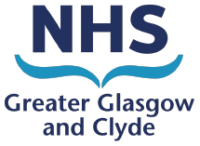When you arrive
A member of staff will meet you and show you to your room and explain the layout of the unit. They will be happy to answer any questions you may have. Staff will advise you of the usual routine within the unit and provide you with any equipment you may need for your baby during your stay. For safety reasons we will check through your belongings with you to ensure there are no sharp objects or medication which may have been brought into the unit.
Please tell staff if you:
- Have had recent illnesses such as a fever, diarrhoea, vomiting or any rashes or spots.
- Need help with your mobility and need any specialist equipment
- Have any problems with your eyesight, speech, hearing or any other disabilities
- Have any problems with swallowing or dietary requirements
- Have an Advanced Statement which outlines your preferred choices regarding your care.
Care and treatment
Our focus is to help you get better as soon as possible and develop a healthy and safe relationship with your baby. We can help in a variety of ways and your care and treatment is provided by staff with extensive experience and expertise.
On admission, you will be informed of your Named Nurse and Named Nursery Nurse who will jointly develop a care plan that will meet your needs and provide any support you might need with your baby. You will also meet with a psychiatrist who will work with you to make a management plan during your admission. As part of your assessment, and with your permission, we will usually ask to meet with your partner and/or other family member.
Staff from our Multidisciplinary Team (described in the next section) will be available to assist you and your family with support in relation to finances, housing and family based issues. Staff will be available throughout your stay to discuss your treatment, progress and plans for discharge. The team will meet on a weekly basis to review your care.
Common treatments may include medication, talking therapies, group therapies and working with you and your baby together. There is a programme of therapeutic activities on the unit and your mental health and nursery nurses will plan individual and group activities with you.
A small number of patients are admitted to the unit under compulsory provisions of the Mental Health Act. If this is the case, staff will explain your rights under the Act and help you, if you wish, to appeal against your detention. Staff will also help you contact an independent advocacy service that can support you in putting across your views on your care and treatment.
The Multi-Disciplinary Team (MDT)
The care you receive in hospital will be provided by a group of professionals with different skills and expertise called the multi-disciplinary team (MDT). They work together to provide a package of care and treatment that is appropriate for you. You may not personally meet all the members of this team but they will contribute to discussions about the most appropriate treatment package for you.
The members of a MDT commonly include:
- Doctors – A Consultant Psychiatrist will be responsible for aspects of your care whilst you are in hospital. Other ward doctors may be involved in your everyday care.
- Nurses – you will meet various members of nursing staff who are there to coordinate and meet your individual needs on the ward.
- Nursery Nurses
- Health care assistants- HCA’s support the work of the qualified nurses to provide care and support for you during your stay on ward.
- Psychologists
- Social Worker
- Pharmacists – advise on medication information and management
- Occupational Therapists- OT’s are able to assess your ability to live your life in the way you want. They also ensure that you have the skills to function and maintain yourself in your home either with support or on your own.
- Recreational Therapy
- Patient Activity Co-ordinators
- Other Allied Health Professions – Art Therapy, Physiotherapy, Dietetics, Speech and Language Therapy and Podiatry.
The structured therapeutic activities within the ward are considered to be an integral component of your care and treatment and will be discussed with you during your admission. A timetable of meaningful activity is available on the ward.
Your baby’s needs
Within the first few days you will be introduced to the team GP and health visitor. They will discuss with you any medical care your baby might need during your stay, or any advice and support you might want in relation to your baby’s wellbeing and development. The GP will also ask your permission to carry out a routine physical examination of your baby. Our health visitor will be available to monitor your baby’s development and administer any immunisations your baby might require during your stay. They will also keep in touch with your baby’s own GP and health visitor.
We all have a responsibility to ensure that the needs of your baby are always given priority. You will continue to have responsibility as a parent to ensure that your baby is kept safe and to help them grow and develop. Our staff will assess how you are able to care for your baby and offer support and guidance if required.
Depending on how your illness affects you, our staff may support and guide you in meeting your baby’s needs. If we have concerns that there are particular problems in caring for your baby, this will be discussed with you and, where relevant, your partner, about how the needs of your baby can be best met.
Sometimes staff may seek help for you and your baby from social services if we feel you need extra support or where there are concerns that your baby’s needs are not being met. On rare occasions it may be in your baby’s best interests to be cared for out with the hospital setting whilst you are recovering from your illness.
Booklets explaining parental responsibilities and rights are available from staff.
Meals
The hospital will give you a menu for choosing your meals. For more information please see the booklet ‘Information about Food and Health in Hospitals’ which is available in the ward. Halal, Kosher, Vegan and Allergen free meals are available on request. There are also meals available for those on specific medication regimes.
Patient Laundry
There are laundry facilities within the ward as we are a regional unit. Wherever possible, we do encourage relatives to take laundry for washing as per the Health Protection Scotland leaflet ‘Washing clothes at home: information for people in hospital or care homes and their relatives’. Please ask your nurse for a copy.
Student Teaching
Leverndale Hospital is a teaching hospital; an important part of our work is clinical teaching and training of students in medical, nursing and other professions. You have the right to decide whether or not you wish to take part in student teaching.






